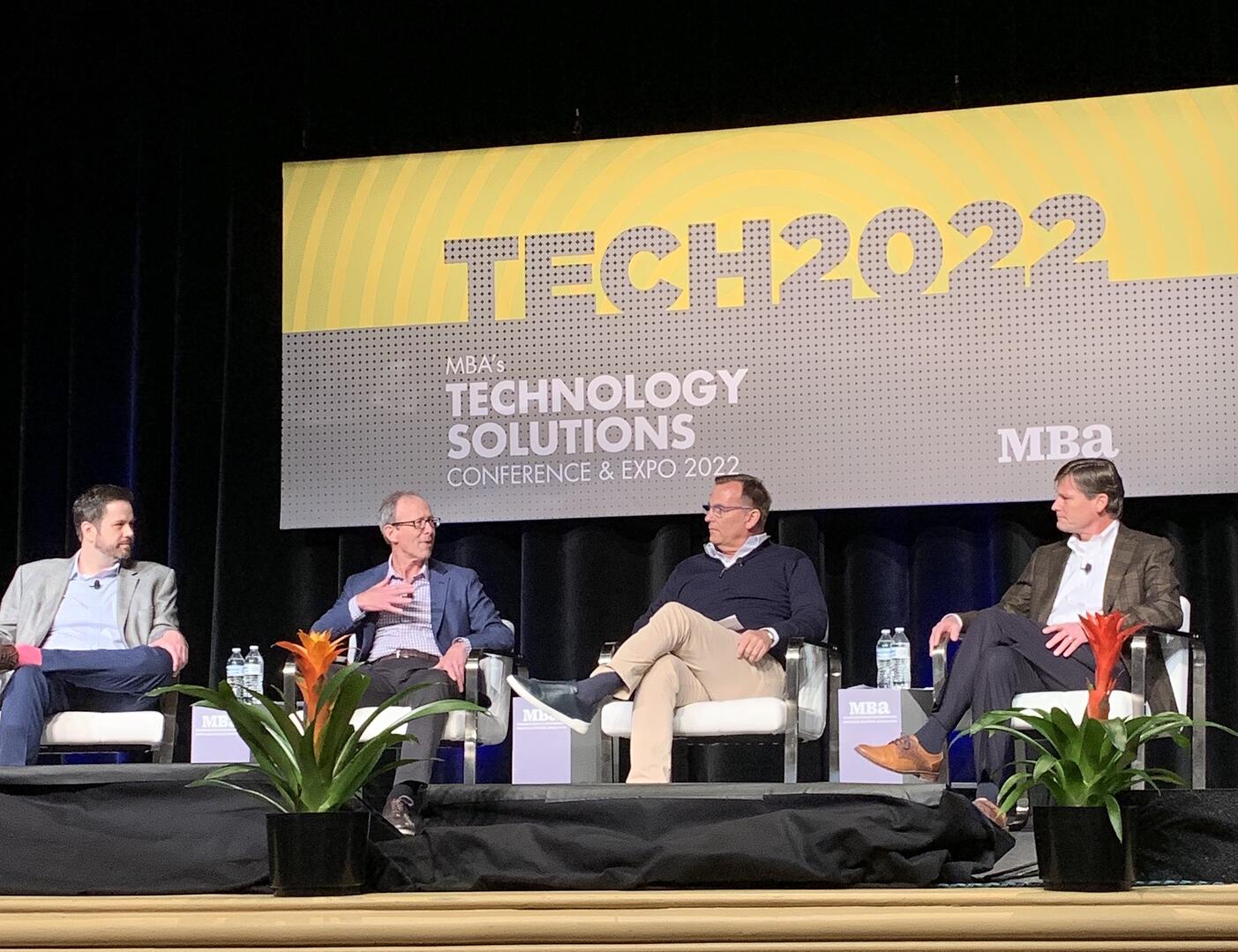Mortgage Leaders Discuss Digital Evolution at MBA Tech 2022
How do real estate finance executives make technology investment decisions in this dynamic environment, and what lies ahead for the industry? That was the topic of a panel at the MBA’s Technology Solutions Conference and Expo 2022 on April 12 in Las Vegas, which included SitusAMC Executive Chairman Steve Powel and leaders from Rocket Mortgage and U.S. Bank.
Matt Rocco, 2022 MBA Chair-elect, and Chairman and CEO of Grandbridge Real Estate Capital, opened the panel by asking the executives to describe the decision-making process for tech investment.
“We are always asking, ‘Does the investment increase scale and capacity, and does it differentiate us?’ ” said Powel, adding that commercial and residential lending share certain priorities. “Both want data systems, since you can’t manage what you can’t measure. Both want to manage risk, do some kind of portfolio and asset management subsequent to investment, and both need to report to stakeholders, such as regulators and bond buyers.”
But there are critical differences as well. “In the commercial real estate tech space our first priority is data capture,” Powel explained. “The line of data on a commercial loan versus a residential loan is exponentially longer. The second thing is work flow. Can we capture more data more efficiently to support the loan process? In the resi technology space, our first priority is efficiency, transparency, and scale. Number two would probably be automation.”
Seeking True Business Transformation
The mortgage industry is highly complex, but the core business hasn’t changed in decades, Powel added. “We've been able to (develop) technology to make it a more transparent, efficient process, but we’re still making loans to homeowners or to commercial property owners. As we prove out these concepts, we evaluate where to go next with those investments.”
Brian Woodring, Chief Information Officer for Rocket Mortgage, agreed. “It is a frustratingly entrenched issue that we are still essentially trying to optimize a workflow-driven process of taking a folder and collecting documents,” he said. “We got rid of paper but not the paperwork. We moved it to a computer, wiped our hands and declared victory. But that didn’t change the fact that we spend time doing the same kind of work.
“I think the future mortgage lender will be a data processing company, not a financial services company,” Woodring added. “Ultimately the investor is the financial company, and our job is underwrite that client, direct those automated decisions, and drive a faster, better experience for the client with a lot less manual labor and cost.” (l to r) Brian Woodring, Tom Wind, Steve Powel and Matt Rocco
(l to r) Brian Woodring, Tom Wind, Steve Powel and Matt Rocco
But moving the needle will require the industry to unite around standardized platforms rather than building duplicate proprietary technologies, Woodring noted. “As technologists, our responsibility isn't just shifting technology -- it's actually transforming the way the business is done. (Obtaining a mortgage) shouldn’t be a 30-day-plus process. It should be a week, and it can be done with the right data and automation.”
Over the next five years, most of the manual processes will be removed from mortgage operations, predicted Tom Wind, Executive Vice President of Consumer Lending for U.S. Bank Home Mortgage. “That still leaves the front-end piece: How do you connect to customers more efficiently? I think that gets into a lot of lead management, and technologies to engage customers and stay engaged.”
That’s been a particular challenge recently as consumers are taking months to buy a home amid historic competition. “You may have a conversation with a customer in January, and they're not buying a home until March or April,” Wind explained. “How do you stay engaged with that customer for that time period? So building tools to keep that engagement going forward could have a real effect as well.”
The Shifting Intersection of People and Technology
Rocco followed up by asking the panel how the integration of people and technology will shift as the industry becomes increasingly digitized.
“SitusAMC is a services and technology organization,” Powel said. “We’ve got 40 different systems running; eight that are systems of record now. So the whole theory around ROI is, ‘are we investing in our people or our technology?’ And the reality is we look at both.”
Technology empowers people, Woodring noted. “It’s about letting people do what people are good at – persuasion, helping, creating that connection; but then letting tech do what it’s good at -- making fast, accurate decisions; collecting data; automating processes; doing the paperwork.”
Wind agreed. “We always think about technology as enabling employees to make the experience better for our customers, bringing us together in better ways,” he said.
To explore how SitusAMC is transforming the lifecycle of real estate finance, visit our website.
